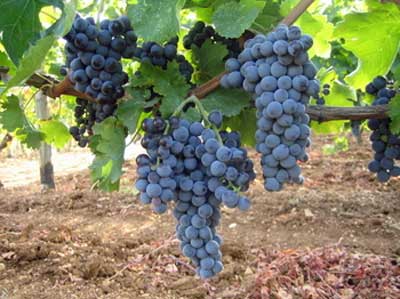
Texas Aglianico: Just a Few Years Ago, Who’d a Thunk it? Time to Give It a Try!
Aglianico, (pronounced – Ah-lee-an-ee-ko) tis the name of a red grape variety that is at home in Southern Italy, and now in faraway Texas too. It’s believed to be derived from Ellenico, the Italian word for Greek. This gives a clue to the true origin of his Mediterranean grape variety. It was likely introduced to Italy by the Greeks who settled in Southern Italy more than two thousand years ago.
Aglianico is not as yet common name in the American wine lexicon as it’s been resting in bucolic obscurity in Campania and Basilicata, but with recent plantings in Texas, this may soon change.
In Italy, Aglianico makes full-bodied and rustically elegant wines with firm tannins and high acidity. Aglianico is made into both varietal wines and often found in blends. It sometimes plays a minor role in blends with the ubiquitous Sangiovese.
The Italian DOCs of Taurasi and Aglianico of Vulture [which would make a pretty good brand name in Texas] are where the best wines are produced. The combination of flavor, tannin and acid, even in warmer growing regions, indicates that Aglianico is suitable for emerging wine regions like Texas, having the capable of producing single varietal and blended wine that are food-friendly and also capable of long aging.
Texas viticultural consultant, Bobby Cox said, “This year’s harvest has been truly exceptional. But, I believe that one of the real stars of the 2010 vintage in the red grape category is going to be Aglianico. It’s nearly the middle of October and its been hanging on the vine for a long time now, just soaking up the sun on the Texas high plains. We harvested last weekend and the berries had 25 Brix with really good flavor and crisp acidity. The quality of the fruit is beyond superb, better than anyone’s expectations.”
Where can you find Texas produced Aglianico wine? The only place I know so far is at Duchman Family Winery in Dripping Springs, Texas. I had the opportunity to taste some from a limited release from their 2008 vintage, and it was exceptional. It the characteristics of other Mediterranean grape varieties that I’ve tasted, such as Nero d’Avola from Sicily and Mencia in Spain. It’s rustic and bold with tannins, but carried with crisp acidity that keeps it fresh on the palate and helps it meld with a wide variety of foods from grilled or sauced meats to light pasta dishes.
According to Bill Elsey, Director of Wine Sales at Duchman Family Winery said, “Aglianico has found a new home in the vineyards of the Texas high plains and Texas Hill Country AVA’s. Basking in the long and intense summer sun, our Aglianico is a red wine that offers notes of dried red fruits, spices, and a slight touch of oak.”
Bill added, “I tasted the 2009 yesterday with Stan Duchman and Winemaker Dave Reilly and it’s showing great promise. I have to admit, the 2010 fruit looks great. Across the board, from Aglianico, Nero D’avola, Mourvedre, and Tempranillo, all of the fruit we received was great. 2010 is going to be a great vintage for Texas.”
My bet is that Aglianico will be following in the footsteps of Dolcetto as another Italian grape variety that will do well in Texas. Recall that Duchman’s 2008 Texas Dolcetto captured at Double Gold Medal at the San Francisco International wine competition (https://vintagetexas.com/?p=1844). That’s a credible performance and it says that Italian varietals grown in Texas can stand up against the best on the world stage.
No doubt, we will be hearing more about Texas Aglianico, too. Give it a try, as soon as you can.
— — — — —
Also, it’s Regional Wine Week (www.drinklocalwine.com)! Try some wine made in a winery near you.

There is another Texas Aglianico. It’s at Perissos Vineyard in Burnet, Texas.
There Aglianico Blend presents a beautiful red ruby, cherry color and has a sweet, oaky vanilla-like bouquet that follows through to the palate. This traditional Italian blend of Aglianico and Nero d’Avola has pleasant tannins that linger.
http://www.perissosvineyards.com
We have already cast the die with Aglianico. There are lots of acres of the variety on excellent sites. The Oswald planting is 7.8 acres, possibly the largest planting of this variety in the US. Bottom line, look for Aglianico on a shelf or restaurant near you and if it’s not there ASK!